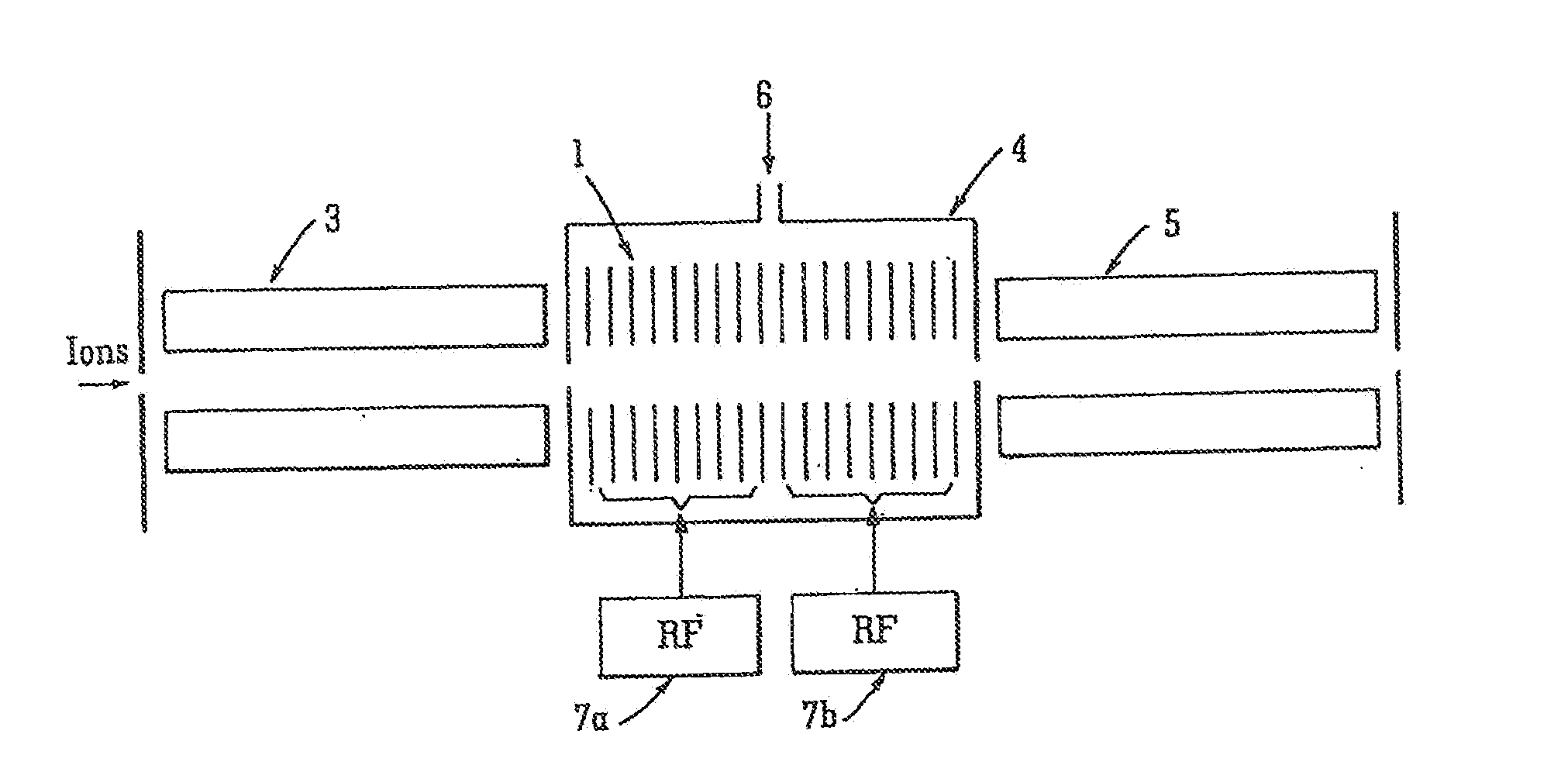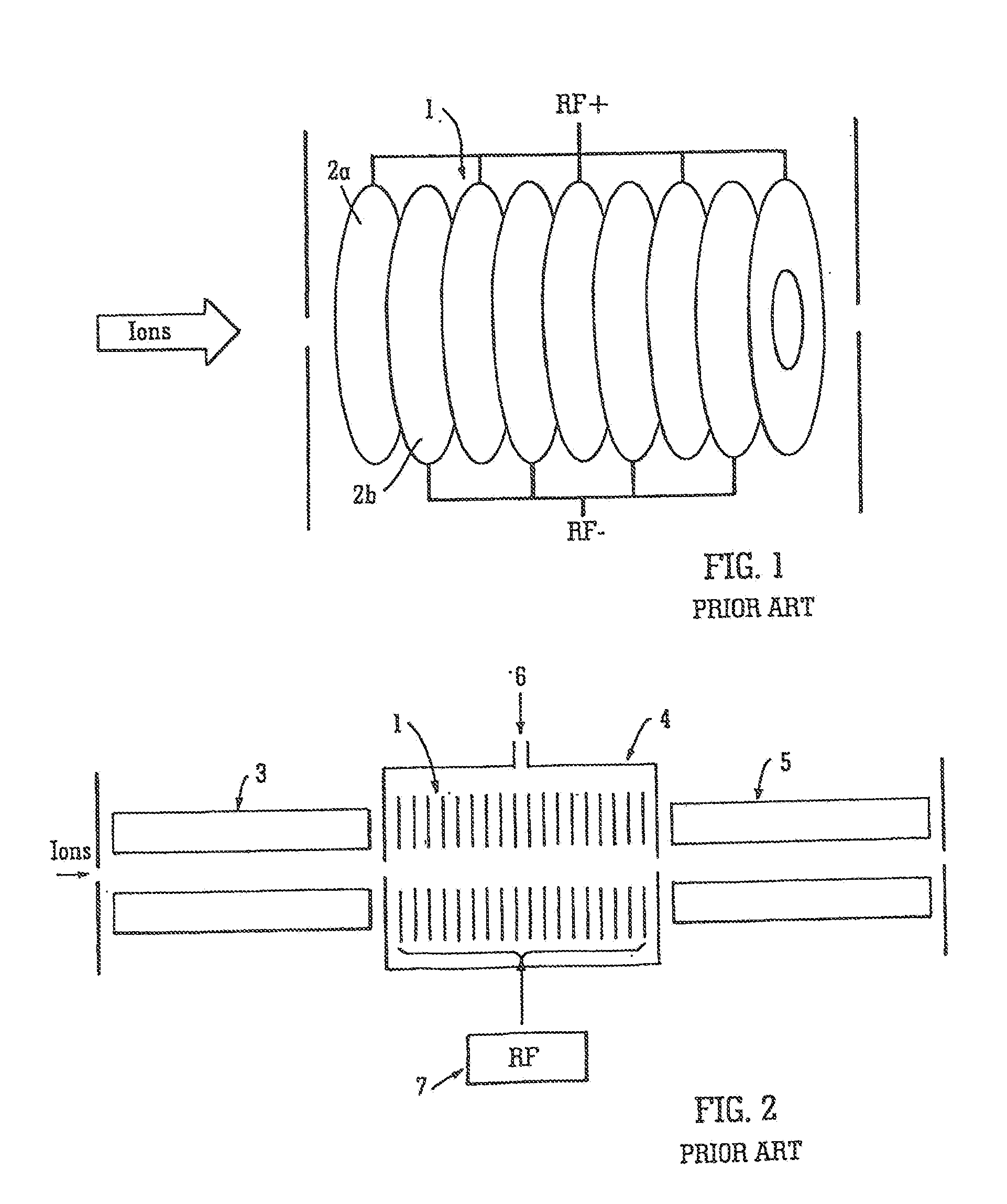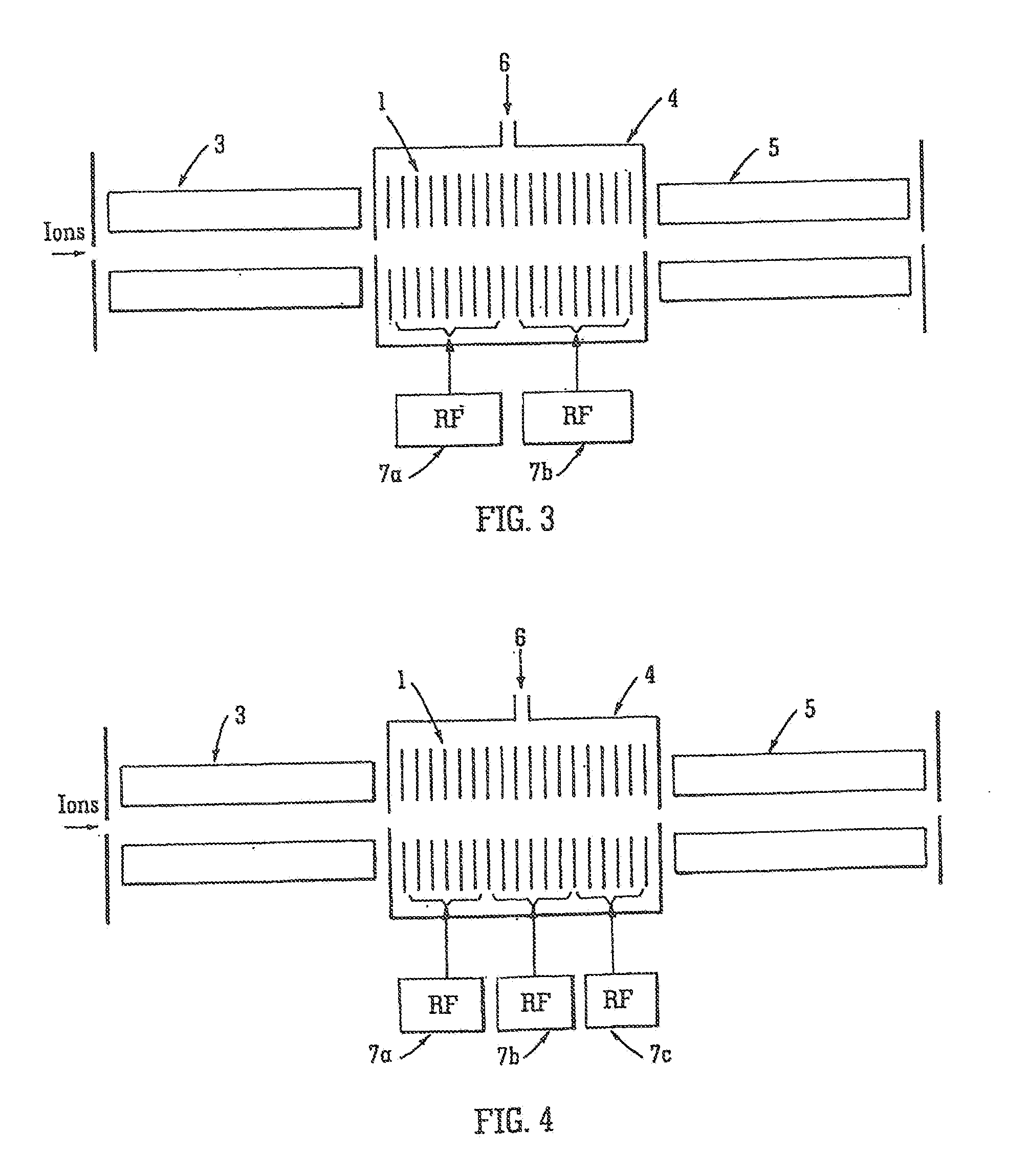Mass Spectrometer
a mass spectrometer and mass spectrometer technology, applied in the field of mass spectrometers, can solve the problems of reducing the overall transmission efficiency of ions, fragment or product ions produced within the fragmentation cell may also become lost due to scattering effects, and the yield of product or fragment ions to exit, so as to maximise the yield of product or fragment ions.
- Summary
- Abstract
- Description
- Claims
- Application Information
AI Technical Summary
Benefits of technology
Problems solved by technology
Method used
Image
Examples
Embodiment Construction
[0194]A preferred embodiment of the present invention will now be described. FIG. 1 shows for illustrative purposes only an RF ion guide comprising a ring or ion tunnel stack assembly 1. The ion guide comprises a stack of ring electrodes 2a,2b. Opposite phases of an AC or RF voltage are applied to axially adjacent electrodes 2a,2b.
[0195]The electrodes are approximately 0.5 mm thick and have an axial centre to centre spacing in the range 1 to 1.5 mm. The inner aperture of the ring electrodes may be in the range 4 mm to 6 mm diameter.
[0196]The frequency of the AC or RF voltage is in the range 300 kHz to 3 MHz and the AC or RF voltage has an amplitude in the range of 500-1000 V peak to peak. The optimum, amplitude of the AC or RF voltage depends upon the exact dimensions of the assembly, the frequency of the AC or RF voltage and the mass to charge ratio of the ions being transmitted.
[0197]FIG. 2 shows a known tandem quadrupole mass spectrometer or triple quadrupole arrangement. The kn...
PUM
 Login to View More
Login to View More Abstract
Description
Claims
Application Information
 Login to View More
Login to View More - R&D
- Intellectual Property
- Life Sciences
- Materials
- Tech Scout
- Unparalleled Data Quality
- Higher Quality Content
- 60% Fewer Hallucinations
Browse by: Latest US Patents, China's latest patents, Technical Efficacy Thesaurus, Application Domain, Technology Topic, Popular Technical Reports.
© 2025 PatSnap. All rights reserved.Legal|Privacy policy|Modern Slavery Act Transparency Statement|Sitemap|About US| Contact US: help@patsnap.com



